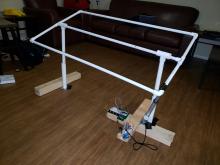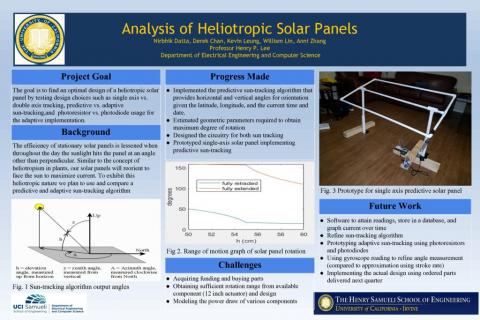Analysis of Heliotropic Solar Panel Designs
Stationary solar panels are inefficient because throughout the day sunlight does not hit the solar panel perpendicularly due to fact the sun moves across the sky. Heliotropic models aim to address this problem by "tracking" the sun similar to heliotropism in plants.
Our project aims to analyze different design choices for the optimal heliotropic solar panel:
- Adaptive vs Predictive Sun-Tracking - Adaptive sun tracking will face towards the direction with the most sunlight while predictive will face a predetermined position based on a sun-tracking algorithm given latitude, longitude, as well as time and day.
- Single Axis vs Double Axis-Tracking - Observe the efficiency of rotating on a single axis vs that of two axes.
- Photoresistors vs Photodiodes - Implementing adaptive sun-tracking using the two technologies to see which produces a more accurate reading.
Given the optimal design of the heliotropic panels, we hope create a cheaper and more efficient implementation of an existing source of renewable energy.
Department:
EECS
Term:
Fall
Academic year:
2018-2019


